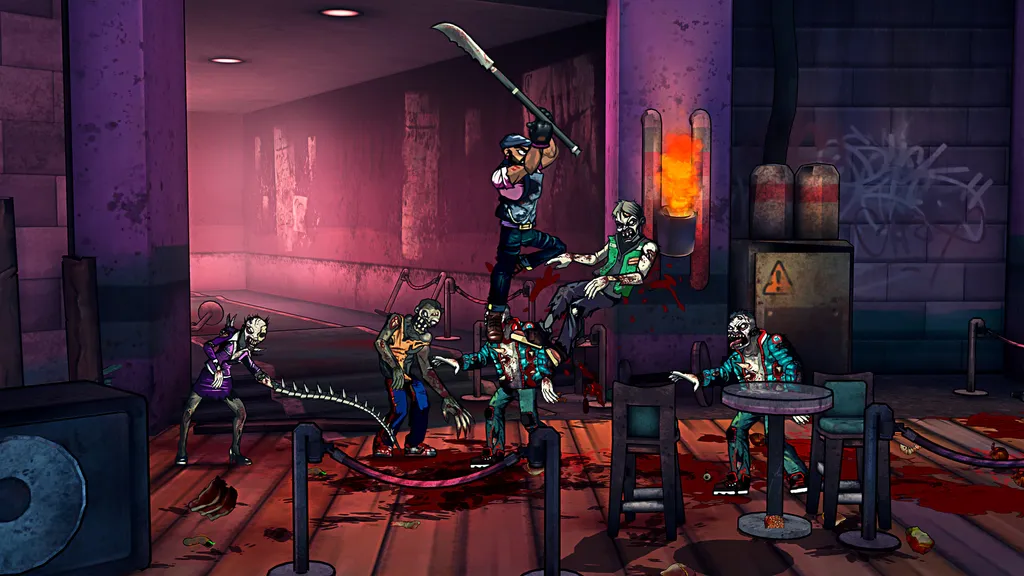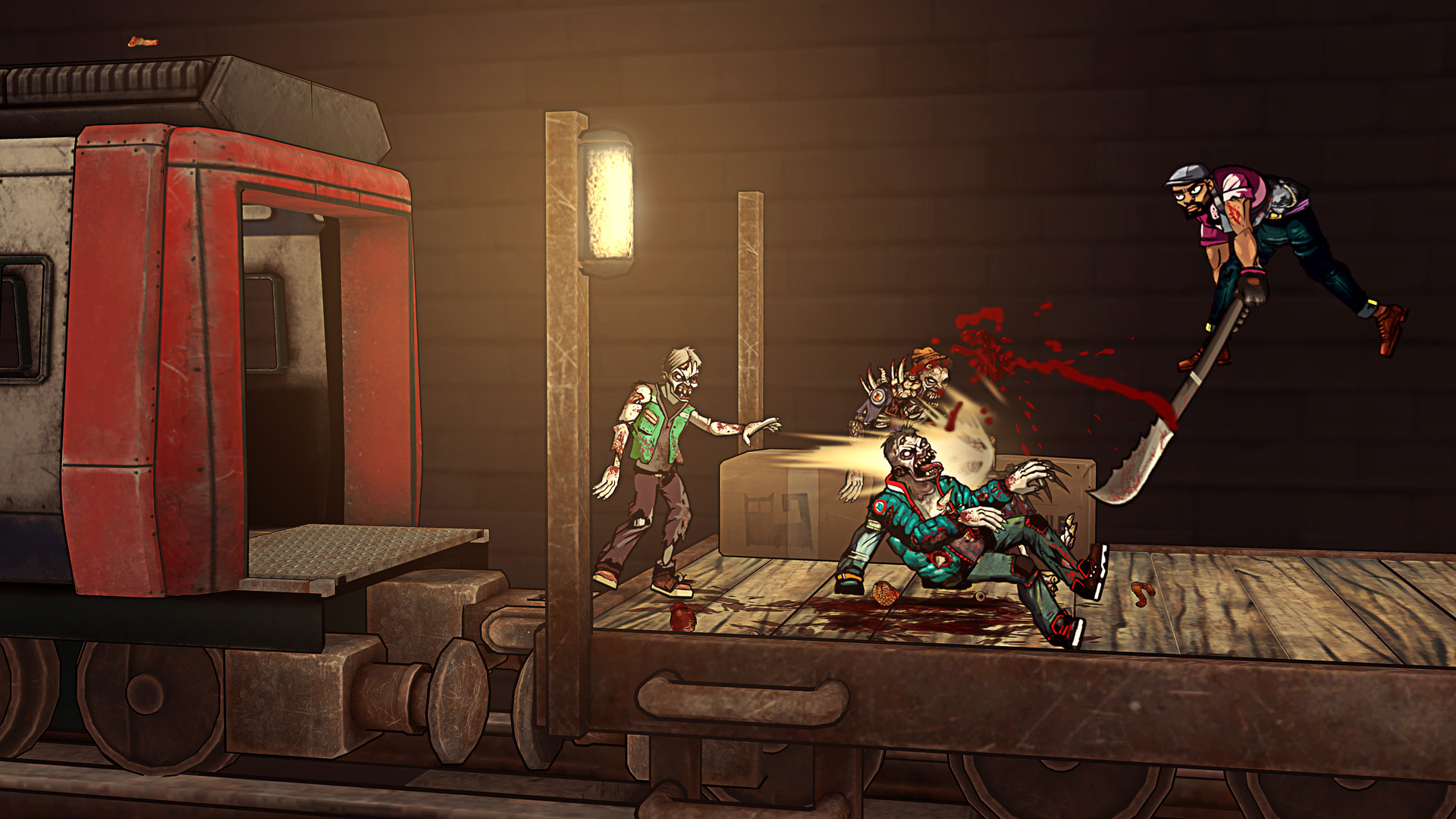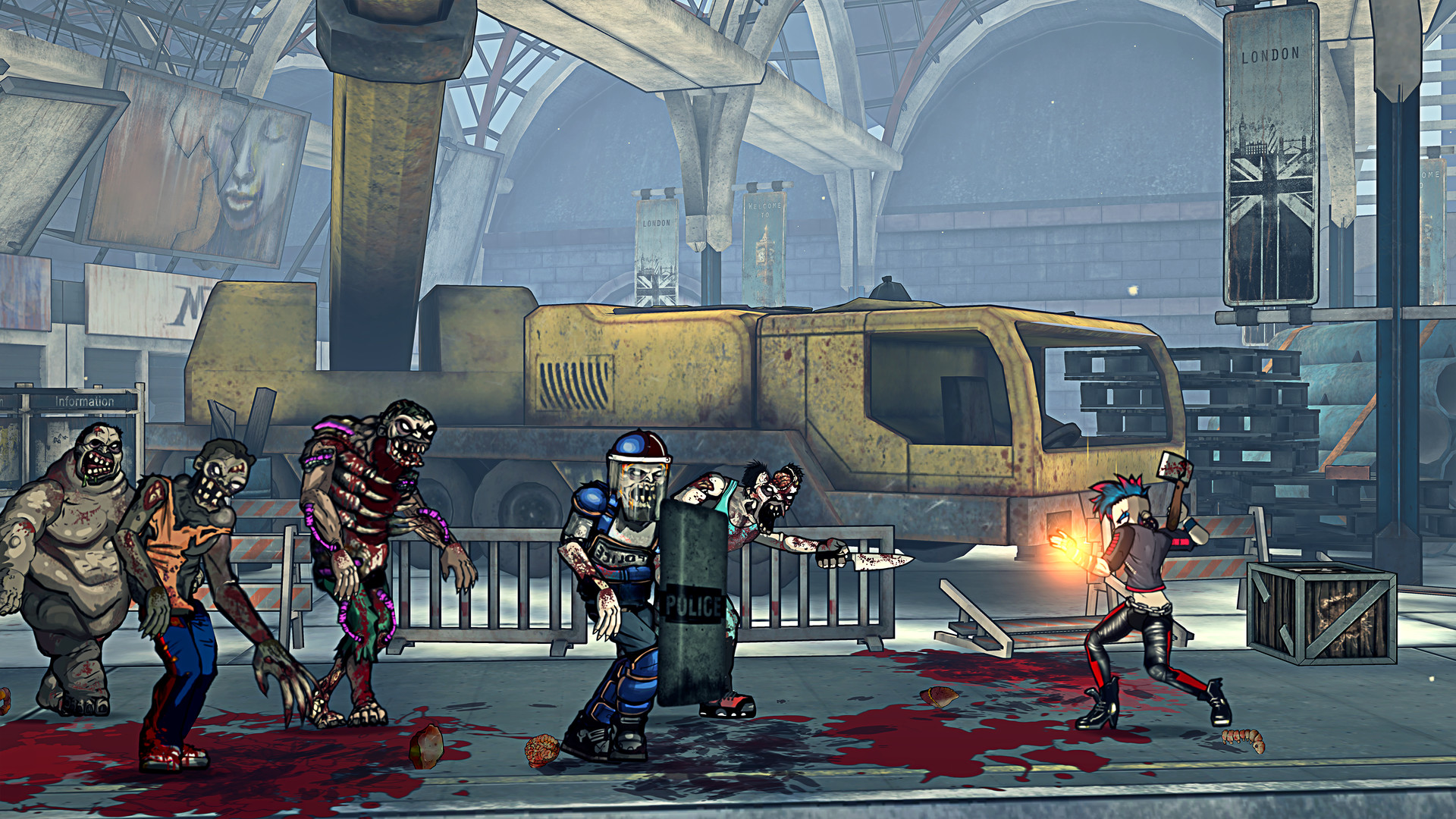I grew up as a Genesis kid back in the 90s. The Sega Genesis ruled my free time as I poured hours upon hours into the likes of Sonic the Hedgehog, Phantasy Star, Aladdin, Golden Axe, and Streets of Rage. Back then sidescrolling beat ’em up action games were atop the game industry as one of the most popular and exciting game genres. You don’t see modern takes on the formula very much these days, so consider me surprised the first time I learned about Bloody Zombies.
Bloody Zombies is a sidescrolling beat ’em up that’s very similar to Double Dragon, Battletoads, and other such games but it has one massive new feature: VR support. When you play Bloody Zombies in VR it’s still the same core game — you’re running from left to right, fighting zombies, performing combos, and slowly picking your way through levels — but it feels more like you’re looking at little action figures on a diorama than playing a video game.
At the heart and soul of any good sidescrolling brawler is pacing. The moment-to-moment gameplay mechanics are important but unless enemies, level variety, and new gameplay additions are spread out well then the whole thing is going to come off as more disjointed than it should. Pacing is definitely an area that Bloody Zombies tends to struggle with a bit. Many of the enemies, even the earliest ones, take a long time to kill meaning that you’ll have to land several multi-hit combos to finally take them out. It’s not too difficult, per se, but it just means that level length is artificially inflated since enemies are punch sponges.
The gameplay is shaken up quite a bit with the inclusion of special abilities that you can equip and find throughout levels though. For example, by holding down the RB button on an Xbox One gamepad I could switch between different specials that let me do anything from massive launch attacks to subtle evasions. This helps implement a sense of growth and progression, but I never found that any of the specials really changed my approach to combat enough to feel revolutionary. For the most part I just used the same handful of combos and aerial launch techniques at the end that I’d been using since the start.
Thankfully there is a healthy mix of enemies and levels to play through, but the game moves so slowly it’s hard to really appreciate the variety. Enemies pour into some sections for what feels like forever and by the time you’re done with the waves you’re chomping at the bit to finally move on. Characters move too slowly by default and enemies have far too much health which contributed the game overall feeling quite sluggish.
Visually it’s quite nice unless you look too closely at certain flat textures that feel like they’re lacking the detail character models are. This is even more noticeable in VR when you can lean forward and get close up close to the action. Looking side-to-side to see the entire level sprawled out is a nifty treat, but loses its appeal after a few minutes. Eventually you’ll end up just playing the game exactly as you would on a 2D screen and not moving your head too much. Since this game supports both play modes the VR features feel like a bit of an afterthought that may have been added on after the game was nearing completion as an additional marketing gimmick.
Whether you’re playing on PC with a Rift or Vive or on PS4 with a PSVR you can play with or without VR support to your heart’s content, which is actually the source of the game’s best feature: asynchronous multiplayer. Since Bloody Zombies can be enjoyed both with and without VR that means couch co-op is back in a big way. One person can be inside a headset while others are outside and playing the same game side-by-side. It evoked some feelings similar to those found while playing titles like Playroom VR on PSVR back at launch, but Bloody Zombies sports online multiplayer as well.
Bloody Zombies has a confusing existence. On the one hand the gameplay is fun enough to entertain for a few hours, especially if enjoyed with friends, but it lacks enough pull as an original concept to really offer much in the way of innovation. For all intents and purposes this is a very by-the-numbers sidescrolling brawler with a zombie theme that just so happens to let you look around at levels in a VR headset. Unless you’re dying for a Streets of Rage-esque experience in VR then you can probably survive by just passing on this one.
Bloody Zombies is available for HTC Vive and Oculus Rift on Steam and the PSN Store for PSVR at the price point of $14.99. Check out these official review guidelines to find out more about our process.




























